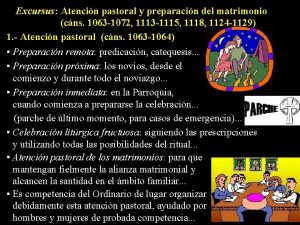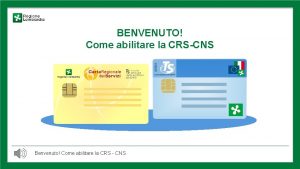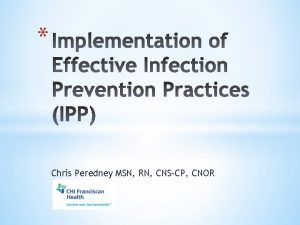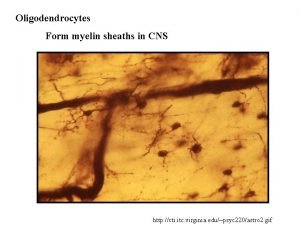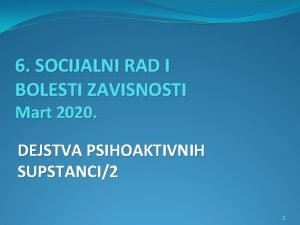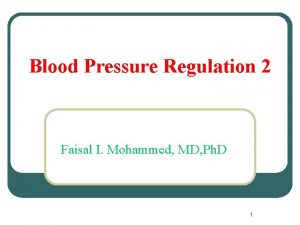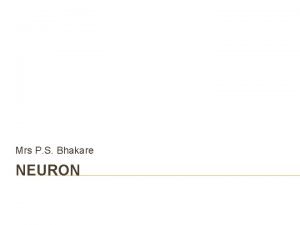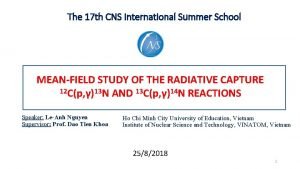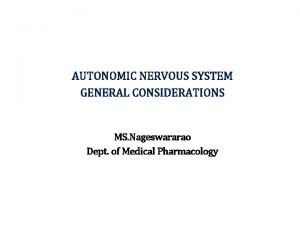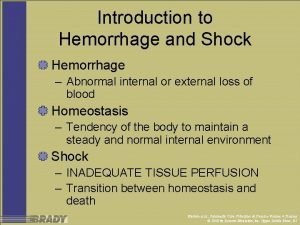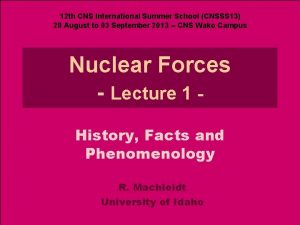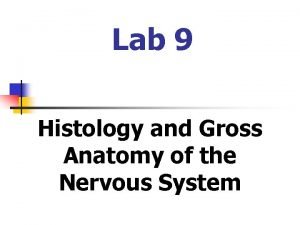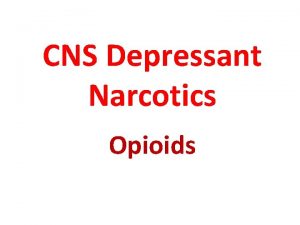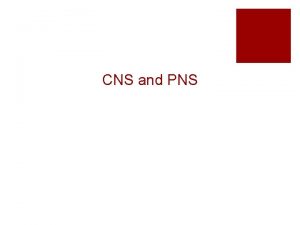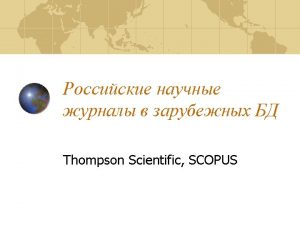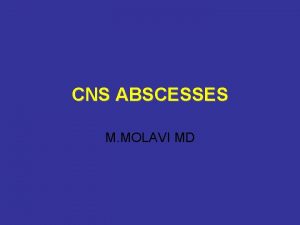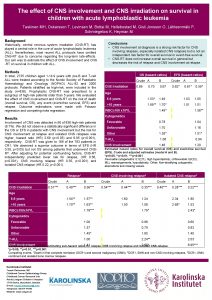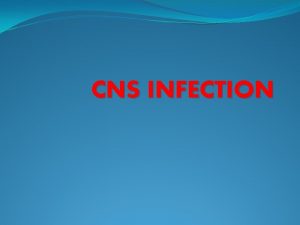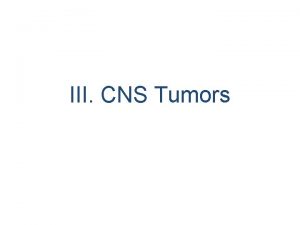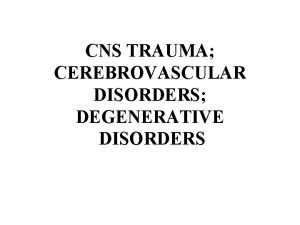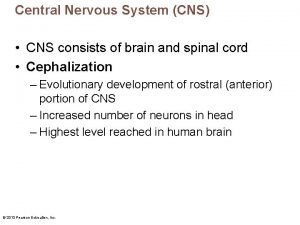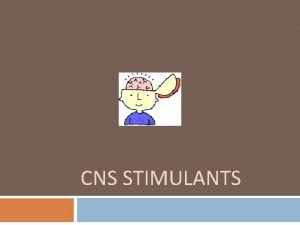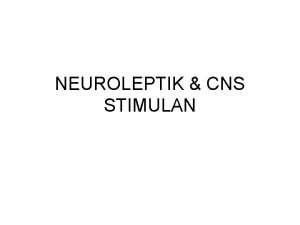http sci 2 cns iu edu http sci















- Slides: 15

http: //sci 2. cns. iu. edu http: //sci 2. wiki. cns. iu. e du 1

Type of Analysis vs. Level of Analysis Micro/Individual (1 -100 records) Meso/Local (101– 10, 000 records) Macro/Global (10, 000 < records) Statistical Analysis/Profiling Individual person and their expertise profiles Larger labs, centers, universities, research domains, or states All of NSF, all of USA, all of science. Temporal Analysis (When) Funding portfolio of one Mapping topic bursts individual in 20 -years of PNAS 113 Years of Physics Research Geospatial Analysis (Where) Career trajectory of one individual Mapping a states intellectual landscape PNAS Publications Topical Analysis (What) Base knowledge from which one grant draws. Knowledge flows in Chemistry research Vx. Ord/Topic maps of NIH funding Network Analysis (With Whom? ) NSF Co-PI network of one individual Co-author network NSF’s core competency 2

Sci 2 Tool – “Open Code for S&T Assessment” OSGi/CIShell powered tool with NWB plug-ins and many new scientometrics and visualizations plug-ins. Sci Maps GUESS Network Vis Horizontal Time Graphs Börner, Katy, Huang, Weixia (Bonnie), Linnemeier, Micah, Duhon, Russell Jackson, Phillips, Patrick, Ma, Nianli, Zoss, Angela, Guo, Hanning & Price, Mark. (2009). Rete-Netzwerk-Red: Analyzing and Visualizing Scholarly Networks Using the Scholarly Database and the Network Workbench Tool. Proceedings of ISSI 2009: 12 th International Conference on Scientometrics and Informetrics, Rio de Janeiro, Brazil, July 14 -17. Vol. 2, pp. 619 -630.

Sci 2 Tool Geo Maps Circular Hierarchy

Sci 2 Tool: Algorithms See https: //nwb. slis. indiana. edu/community Preprocessing Modeling Extract Top N% Records Extract Top N Records Normalize Text Slice Table by Line ----------------------Extract Top Nodes Extract Nodes Above or Below Value Delete Isolates ----------------------Extract top Edges Extract Edges Above or Below Value Remove Self Loops Trim by Degree MST-Pathfinder Network Scaling Fast Pathfinder Network Scaling ----------------------Snowball Sampling (in nodes) Node Sampling Edge Sampling ----------------------Symmetrize Dichotomize Multipartite Joining ----------------------Geocoder ----------------------Extract ZIP Code Random Graph Watts-Strogatz Small World Barabási-Albert Scale-Free TARL Weighted & Undirected Clustering Coefficient Nearest Neighbor Degree Strength vs. Degree & Strength Average Weight vs. End-point Degree Strength Distribution Weight Distribution Randomize Weights ----------------------Blondel Community Detection ----------------------HITS Analysis Network Analysis Toolkit (NAT) Unweighted & Undirected Node Degree Distribution ----------------------K-Nearest Neighbor (Java) Unweighted & Directed Watts-Strogatz Clustering Coefficient Node Indegree Watts Strogatz Clustering Coefficient over K Node Outdegree ----------------------Indegree Distribution Diameter Outdegree Distribution Average Shortest Path ----------------------Shortest Path Distribution K-Nearest Neighbor Node Betweenness Centrality Single Node in-Out Degree Correlations --------------------------------------------Weak Component Clustering Dyad Reciprocity Global Connected Components Arc Reciprocity ----------------------Adjacency Transitivity Extract K-Core ----------------------Annotate K-Coreness Weak Component Clustering ----------------------Strong Component Clustering HITS ----------------------- 5

Sci 2 Tool: Algorithms cont. See https: //nwb. slis. indiana. edu/community ----------------Extract K-Core Annotate K-Coreness ----------------HITS Page. Rank Weighted & Directed HITS Weighted Page. Rank Textual Burst Detection Visualization Scientometrics Gnu. Plot GUESS Image Viewer ----------------------Radial Tree/Graph (prefuse alpha) Radial Tree/Graph with Annotation (prefuse beta) Tree View (prefuse beta) Tree Map (prefuse beta) Force Directed with Annotation (prefuse beta) Fruchterman-Reingold with Annotation (prefuse beta) ----------------------Dr. L (Vx. Ord) Specified (prefuse beta) ----------------------Horizontal Bar Graph Circular Hierarchy Geo Map (Circle Annotation Style) Geo Map (Colored-Region Annotation Style) Science Map (Circle Annotation) Remove ISI Duplicate Records Remove Rows with Multitudinous Fields Detect Duplicate Nodes Update Network by Merging Nodes ----------------------Extract Directed Network Extract Paper Citation Network Extract Author Paper Network ----------------------Extract Co-Occurrence Network Extract Word Co-Occurrence Network Extract Co-Author Network Extract Reference Co-Occurrence (Bibliographic Coupling) Network ----------------------Extract Document Co-Citation Network Soon: Database support for ISI and NSF data. 6

See Sci 2 Tool Wiki http: //sci 2. wiki. cns. iu. edu

Type of Analysis vs. Level of Analysis Micro/Individual (1 -100 records) Meso/Local (101– 10, 000 records) Macro/Global (10, 000 < records) Statistical Analysis/Profiling Individual person and their expertise profiles Larger labs, centers, universities, research domains, or states All of NSF, all of USA, all of science. Temporal Analysis (When) Funding portfolio of one Mapping topic bursts individual in 20 -years of PNAS 113 Years of Physics Research Geospatial Analysis (Where) Career trajectory of one individual Mapping a states intellectual landscape PNAS publications Topical Analysis (What) Base knowledge from which one grant draws. Knowledge flows in Chemistry research Vx. Ord/Topic maps of NIH funding Network Analysis (With Whom? ) NSF Co-PI network of one individual Co-author network NIH’s core competency 8

Individual Co-PI Network Ke & Börner, (2006) Temporal/Network Analysis 2001 -2006, US, Info. Vis Scope Evolving project-PI networks 9

Mapping Topic Bursts Co-word space of the top 50 highly frequent and bursty words used in the top 10% most highly cited PNAS publications in 1982 -2001. Temporal/Topical Analysis 1982 -2001, US, PNAS (Bio. Med) Scope Topic evolution and bursts Mane & Börner. (2004) PNAS, 101(Suppl. 1): 5287 -5290. 10

Mapping Transdisciplinary Tobacco Use Research Centers Publications Compare R 01 investigator based funding with TTURC Center awards in terms of number of publications and evolving co-author networks. Zoss & Börner, forthcoming. Temporal/Network Analysis 1998 -2009, US, Tobacco research scope Evolving co-author networks 11

MEDLINE Publication Output by The National Institutes of Health (NIH) Using Nine Years of Ex. PORTER Data Katy Börner, Nianli Ma, Joseph R. Biberstine, Cyberinfrastructure for Network Science Center, SLIS, Indiana University, Robin M. Wagner, Rediet Berhane, Hong Jiang, Susan E. Ivey, Katrina Pearson and Carl Mc. Cabe, Reporting Branch, Division of Information Services, Office of Research Information Systems, Office of Extramural Research, Office of the Director, National Institutes of Health (NIH), Bethesda, MD. Topical Analysis 2001 -2009, US, All NIH funding and associated papers Changes in publication patterns 12

Acknowledgements Software development benefits greatly from the open-source community. Full software credits are distributed with the source, but we would especially like to acknowledge OSGi, Sun/Oracle, Jython, Prefuse, GUESS, Apache Derby, JUNG, and Gnu. Plot. This research and development is based on work supported by National Science Foundation grants SBE-0738111, IIS-0513650, IIS-0534909 and National Institutes of Health grants R 21 DA 024259 and 5 R 01 MH 079068. 13

References Börner, Katy, Chen, Chaomei, and Boyack, Kevin. (2003). Visualizing Knowledge Domains. In Blaise Cronin (Ed. ), ARIST, Medford, NJ: Information Today, Volume 37, Chapter 5, pp. 179 -255. http: //ivl. slis. indiana. edu/km/pub/2003 -borner-arist. pdf Shiffrin, Richard M. and Börner, Katy (Eds. ) (2004). Mapping Knowledge Domains. Proceedings of the National Academy of Sciences of the United States of America, 101(Suppl_1). http: //www. pnas. org/content/vol 101/suppl_1/ Börner, Katy, Sanyal, Soma and Vespignani, Alessandro (2007). Network Science. In Blaise Cronin (Ed. ), ARIST, Information Today, Inc. , Volume 41, Chapter 12, pp. 537 -607. http: //ivl. slis. indiana. edu/km/pub/2007 -borner-arist. pdf Börner, Katy (2010) Atlas of Science. MIT Press. http: //scimaps. org/atlas Scharnhorst, Andrea, Börner, Katy, van den Besselaar, Peter (2011) Models of Science Dynamics. Springer Verlag. 14

All papers, maps, cyberinfrastructures, talks, press are linked from http: //cns. iu. edu 15
